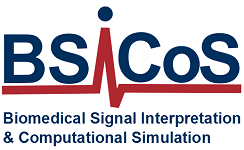-
Proyectos
Development of accurate and physiologically meaningful digital twins of vascular hemodynamics using physics-informed neural networks (IMPULSO project)
Fecha de inicio
2023
Fecha de finalización
2024
Coordinador
Javier Murillo, Julia Ramírez
Funding agency
I3A
It is well known that the shape of the pulse waves is intimately related to the physical properties of the cardiovascular system. Understanding the mechanisms underlying this relation is clinically relevant, since pulse waveforms carry valuable information for the diagnosis and treatment of disease. Numerical simulation of hemodynamics or pulse wave dynamics, underlying how the shapes of pressure and flow waves relate to the physical properties of the cardiovascular system, has become increasingly popular within the research community require in vivo measurements to personalize the arterial geometry, material properties and boundary conditions of the computational. Limitations in in vivo data acquisition result in insufficient information to determine the model parameters.
Our main hypothesis is that accurate prediction of pulse wave dynamics using PINNs can assist in the analysis of pulse wave dynamics if pressure and flow wave forms are accurately predicted.
In this project we aim at developing a physiologically meaningful digital twin of arterial, venous and whole-body hemodynamics with clinical translation potential using PINNs.
To achieve this goal, we also hypothesized that PINNs must be trained using physiologically meaningful mathematical models. Models for single vessels or networks must exhibit characteristic features of the pressure and flow waveforms that are observed in-vivo under normal conditions. For instance, in arteries, the foot of the pressure and flow waveforms in early systole must propagate away from the heart following in-vivo data, or the pulse pressure must increase in the aorta with increasing distance from the heart. Differences between the hemodynamics in arteries and veins must also be observed. The most noticeable difference is the lower pulsatility in veins. Finally, it is also our believe that successful predictions using PINNS require an appropriate treatment of the systems of conservation laws used to describe the physics of the problem. A naive treatment of the discrete version of these equations, using for instance, automatic differentiation is not justified, as it does not consider the fundamentals of wave propagation theory in fluid-structure problems.
